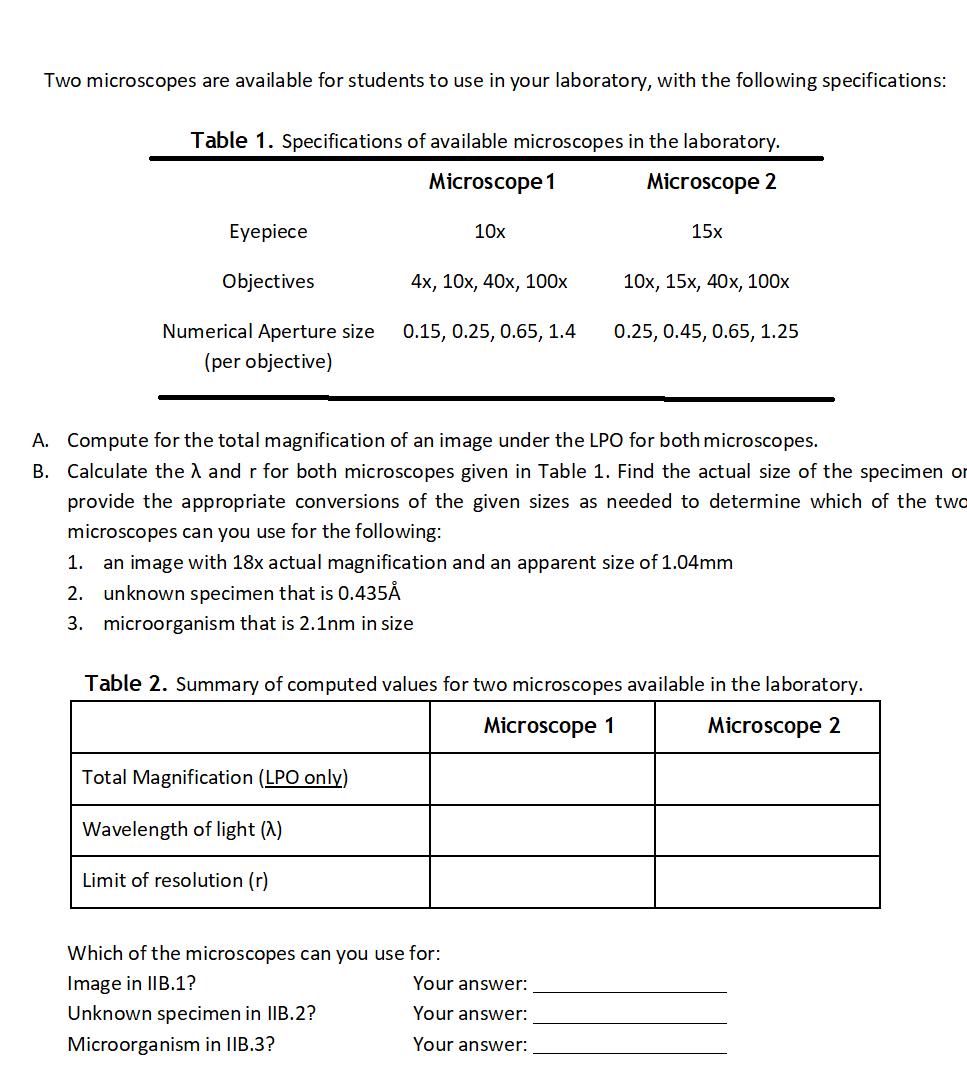A. Compute for the total magnification of an image under the LPO for both microscopes. B. Calculate the λ and r for both microscopes given in Table 1. Find the actual size of the specimen or provide the appropriate conversions of the given sizes as needed to determine which of the two microscopes can you use for the following: an image with 18x actual magnification and an apparent size of 1.04mm 2. unknown specimen that is 0.435Å 3. microorganism that is 2.1nm in size
A. Compute for the total magnification of an image under the LPO for both microscopes. B. Calculate the λ and r for both microscopes given in Table 1. Find the actual size of the specimen or provide the appropriate conversions of the given sizes as needed to determine which of the two microscopes can you use for the following: an image with 18x actual magnification and an apparent size of 1.04mm 2. unknown specimen that is 0.435Å 3. microorganism that is 2.1nm in size
Basic Clinical Laboratory Techniques 6E
6th Edition
ISBN:9781133893943
Author:ESTRIDGE
Publisher:ESTRIDGE
Chapter1: The Clinical Laboratory
Section1.10: The Microscope
Problem 18RQ
Related questions
Question

Transcribed Image Text:Two microscopes are available for students to use in your laboratory, with the following specifications:
Table 1. Specifications of available microscopes in the laboratory.
Microscope 1
Microscope 2
Eyepiece
10x
15x
Objectives
4х, 10х, 40х, 100х
10х, 15х, 40х, 100х
Numerical Aperture size
0.15, 0.25, 0.65, 1.4
0.25, 0.45, 0.65, 1.25
(per objective)
A. Compute for the total magnification of an image under the LPO for both microscopes.
B. Calculate the A and r for both microscopes given in Table 1. Find the actual size of the specimen or
provide the appropriate conversions of the given sizes as needed to determine which of the two
microscopes can you use for the following:
1.
an image with 18x actual magnification and an apparent size of 1.04mm
2. unknown specimen that is 0.435Å
3. microorganism that is 2.1nm in size
Table 2. Summary of computed values for two microscopes available in the laboratory.
Microscope 1
Microscope 2
Total Magnification (LPO only)
Wavelength of light (A)
Limit of resolution (r)
Which of the microscopes can you use for:
Image in IIB.1?
Your answer:
Unknown specimen in IIB.2?
Your answer:
Microorganism in IIB.3?
Your answer:
Expert Solution
This question has been solved!
Explore an expertly crafted, step-by-step solution for a thorough understanding of key concepts.
Step by step
Solved in 2 steps

Knowledge Booster
Learn more about
Need a deep-dive on the concept behind this application? Look no further. Learn more about this topic, biology and related others by exploring similar questions and additional content below.Recommended textbooks for you

